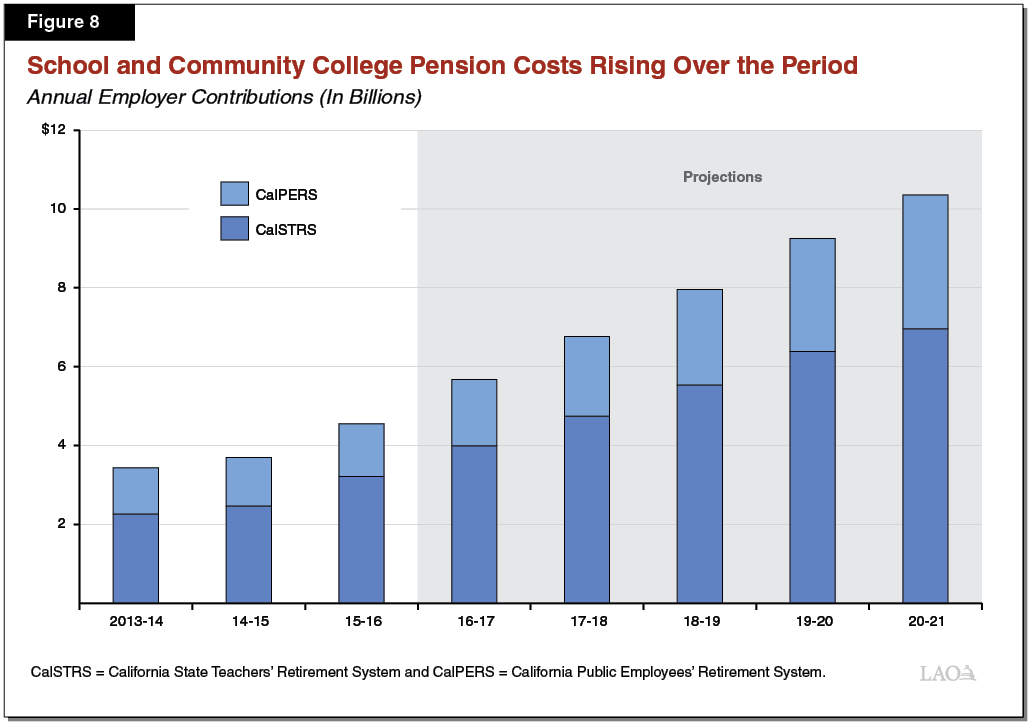Five Questions For Your School in 2018

Five Big Questions for your school
January kicks off the annual debate about how much California invests in schools. We’ve put together FIVE important questions to help you move the discussion toward topics that matter. Parents can play a critical role. Now is a good time to share this with your school community to get them informed and engaged.
#1: Will we have more money to invest in our school?
Don't hold your breath.
School Funding, Radically Simplified: Each January, California's leaders make an educated guess about how much money will be collected in taxes, then decide what portion of that money will go toward public schools. School district leaders, in turn, must try to predict how much they will have available to spend, and build a plan to invest it. You can find this year’s initial state estimate here.
Compared to other states, California's funding for schools is skimpy. School districts are forced to make choices and compromises because there is not enough money to meet all needs of all students in all schools.
Attendance matters. Your school district receives money for each student who shows up to school. It receives a bit more if it has a high proportion of students in poverty, learning English, or in foster care.
School costs, particularly the costs of salaries and pensions, are going up. So be aware: even if you see headlines in January that say the budget provides “more money” for the school system, that does not necessarily translate into more money to invest in more programs and services at your school.
To involve parents in tradeoffs, school districts are required to collect input in the process of developing their Local Control Accountability Plan (LCAP).
Tip: Keep an eye on funding and get prepared now for input in the winter and spring on your district’s LCAP.
#2: What's the Plan?
Each school district must have a public plan for how it will spend the its money. Known as the LCAP (Local Control Accountability Plan), this three-year plan must be updated each year. Once school districts get a look at the proposed state budget, they start refining their proposed LCAP for the next year. Every year you have a chance to let decision makers know what you and your school community think.
Your district's current LCAP plan should be available from the State Department of Education; if it is not, contact your school district.
Tip: The plan is LONG and dense and usually written in tiny print. That’s why you need to jump to the next question.
#3: How are our schools doing?
This is what you really want to know, right? California is making significant changes to the way schools and districts are evaluated. The new tool, called the California School Dashboard, is still quite new. Many school districts prepare an executive summary of school performance in their LCAP to capture not only how it spends its money but how that investment is paying off.
Here is a short “To Do” list:
- Get the LCAP summary. Ask your district for a summary of the LCAP plan. (It will probably be organized into eight parts.)
- Find out when the meetings will happen. Ask your district to send the LCAP summary to all parents together with a calendar of upcoming LCAP meetings. (These typically are held in the Spring.) Ask your parent group or PTA to help get the word out.
- Invite your principal and district staff to a parent meeting at your school to talk about the LCAP. Or organize a community-wide PTA meeting and invite parents from several schools to attend.
#4: What should I ask at community meetings?
This is your chance to hear from school staff about what’s going on. (And it's a chance for staff to hear from you, too!) You can help your district make a better plan by participating. Just so you know, districts are required to keep track of these meetings and report about them in their plan.
Sometimes the words get in the way. If the LCAP is unclear, at community meetings you should ask for clear answers to questions like these:
- What are the district's top priorities?
- How much progress was made last year toward meeting those goals?
- What are the greatest needs?
- Where are the gaps in student performance? Are they getting better or worse, and why?
- How is the district helping low-income students, English learners and foster youth? (Under LCFF, your district receives specific funding that it is expected to use in support of these students -- it is the community's job to notice if this isn't happening.)
- Did the district use all of the money in its plan last year or are there some areas where money was not spent?
- If the plan is not working, what changes are being considered?
#5: Your turn! What ideas, questions and concerns will you bring to your district?
Creating a plan should be a conversation. This is the best time of year to tell district leaders what is working and what can be improved.
As homework ahead of your community meeting, browse through the lessons in Ed100.org. They can help you think about the tradeoffs involved in running a school or district, keeping the big picture in mind. By doing your homework, you will have an easier time influencing the outcome of the meeting.
You might also try using the Ed100 Parent Checklist. Available in English and Spanish, the checklist inks LCAP topics directly to Ed100 lessons.
Tags on this post
All Tags
A-G requirements Absences Accountability Accreditation Achievement gap Administrators After school Algebra API Arts Assessment At-risk students Attendance Beacon links Bilingual education Bonds Brain Brown Act Budgets Bullying Burbank Business Career Carol Dweck Categorical funds Catholic schools Certification CHAMP Change Character Education Chart Charter schools Civics Class size CMOs Collective bargaining College Common core Community schools Contest Continuous Improvement Cost of education Counselors Creativity Crossword CSBA CTA Dashboard Data Dialogue District boundaries Districts Diversity Drawing DREAM Act Dyslexia EACH Early childhood Economic growth EdPrezi EdSource EdTech Education foundations Effort Election English learners Equity ESSA Ethnic studies Ethnic studies Evaluation rubric Expanded Learning Facilities Fake News Federal Federal policy Funding Gifted Graduation rates Grit Health Help Wanted History Home schools Homeless students Homework Hours of opportunity Humanities Independence Day Indignation Infrastructure Initiatives International Jargon Khan Academy Kindergarten LCAP LCFF Leaderboard Leadership Learning Litigation Lobbyists Local control Local funding Local governance Lottery Magnet schools Map Math Media Mental Health Mindfulness Mindset Myth Myths NAEP National comparisons NCLB Nutrition Pandemic Parcel taxes Parent Engagement Parent Leader Guide Parents peanut butter Pedagogy Pensions personalized Philanthropy PISA Planning Policy Politics population Poverty Preschool Prezi Private schools Prize Project-based learning Prop 13 Prop 98 Property taxes PTA Purpose of education puzzle Quality Race Rating Schools Reading Recruiting teachers Reform Religious education Religious schools Research Retaining teachers Rigor School board School choice School Climate School Closures Science Serrano vs Priest Sex Ed Site Map Sleep Social-emotional learning Song Special ed Spending SPSA Standards Strike STRS Student motivation Student voice Success Suicide Summer Superintendent Suspensions Talent Teacher pay Teacher shortage Teachers Technology Technology in education Template Test scores Tests Time in school Time on task Trump Undocumented Unions Universal education Vaccination Values Vaping Video Volunteering Volunteers Vote Vouchers Winners Year in ReviewSharing is caring!
Password Reset
Search all lesson and blog content here.
Login with Email
We will send your Login Link to your email
address. Click on the link and you will be
logged into Ed100. No more passwords to
remember!















Questions & Comments
To comment or reply, please sign in .